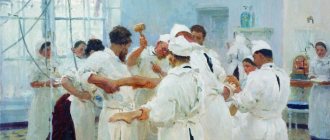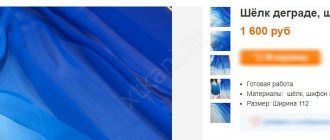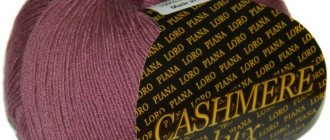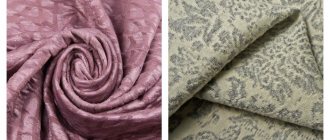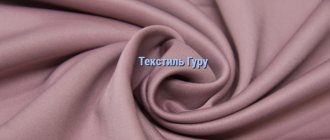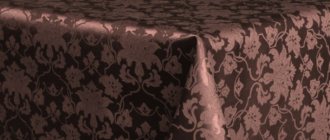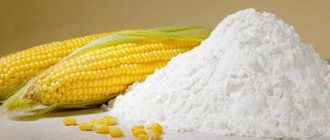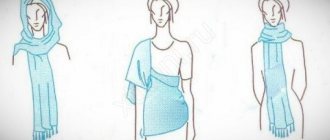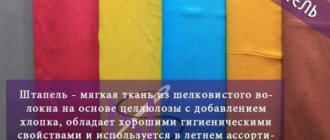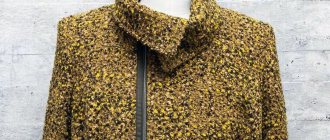Awning fabric is a common material that can be used to provide cover or shelter for something. At the same time, in order to obtain a complete awning structure, it is enough to build a simple frame and deploy the canvas on it. Thanks to this simplicity, awnings are widely used not only in the form of canvases, but also in the form of tents, pavilions and awning shelters.
Arrangement of awning coverings
Since the scope of application of awning coverings is diverse, the design must be resistant to external influences, and the products must be durable, securely fastened, and safe (especially for people who will subsequently be under the awning). It is important to be sure that the structure can withstand squally winds, heavy rain, and sudden snowfall.
How to check the strength of the awning covering?
To take into account the wind load, you can pull the awning onto the frame with a force of several hundred kilograms. At the same time, the roof of the awning should not oscillate, and the frame posts should remain stable.
Operating an awning throughout the year requires calculating the snow load. Different regions have their own norms, depending on the climate.
In the production of awnings, a piece of rectangular, square or round shaped fabric is used. The edges, folded several times, are secured with a special cord made of polymers, after which they are welded. Next, holes are punched around the perimeter into which eyelets are placed - metal rings.
During operation, a cord is passed through the rings, which allows you to secure the awning to the supporting structure. The eyelets should be spaced quite often; the lifespan of the canvas depends on this. The likelihood of damage decreases as the number of attachment points increases.
During use, it is recommended to tighten the awning more carefully to prevent the material from oscillating in the wind. The average service life of coatings is up to 4 years for fabrics made from natural fibers and up to 10 years when using synthetic polymers.
Basic requirements for materials for awnings
Awning fabric is a canvas that is used as a canopy, partitions or protective layer in various industries, in transport and in everyday life. To be functional, canopy materials must have the following qualities:
- strength. As a rule, awnings are constantly exposed to numerous mechanical loads, so it is very important that the fabric effectively withstands them;
- resistance to atmospheric conditions. Sheds in most cases are located in the open air, so it is necessary that neither rain, nor wind, nor sun rays cause damage to them;
- resistance to temperature changes. Such materials should not lose their functionality both in the summer heat and in the winter frosts;
- dimensional stability. Over time, the fabric should not stretch or sag;
- waterproof. And on cars, and on warehouse sites, and in summer cafes, awning fabrics must provide reliable protection from moisture;
- lightness and elasticity. These qualities are very important when installing canopies and other tent structures, which should be extremely simple and not require the use of special tools;
- resistance to chemicals. At industrial and construction sites, gasoline, solvents, paints and other liquids can get on the awning canvas. The material should not only not deteriorate, but also be easy to clean using simple means;
- opacity. In many cases, awnings are required to limit the access of ultraviolet rays to objects;
- reduced wear. As a rule, all canopies are made for more than one season, so it is very important that the fabric retains its appearance for a long time;
- safety. Tent canopies should not emit substances harmful to the human body and cause diseases;
- ease of care. Priority is given to materials that do not collect dust and dirt. In addition, it is important that cleaning and washing them does not take much time;
- safety. Working in conditions of high humidity, awning fabrics cannot succumb to rot and mold, which destroys them. Therefore, all canvases must undergo appropriate processing.
It is desirable that, when stored, the materials for making canopies can be easily rolled up or put into trunks and do not take up much space. An important factor is the cost of awning fabrics, which should be affordable for all categories of consumers.
Popular manufacturers
Among European manufacturers of awning fabrics, Ferrari (France) is distinguished. The company was the first on the market to produce fabrics using Precontraint technology, which is based on the fact that the threads are in a tense state at each stage of applying the PVC coating.
Well-known companies whose products are in demand include:
- HeyTex (Germany);
- Dickont (France);
- Mehler (Germany).
On the Russian market they distinguish “Flexolux” (cast awnings using HeyTex technology). produces products.
Application of awning fabrics
Awning materials can be used not only outdoors, but also inside buildings. The areas of their application can be very different, namely:
- Awnings for trucks and trailers.
- Covers for motorcycles and scooters.
- Registration of entry and exit from the car wash.
- Canopies for car parks and parking lots.
- Awnings for yachts and boats.
- Sheltering agricultural products: grain, vegetables, etc.
- Creation of exhibition or trade pavilions, tents and gazebos.
- Advertising banners, posters and banners.
- Canopies over pools to protect from debris and leaves.
- Curtains separating different rooms in industrial facilities.
- In construction, to protect materials and equipment stored outdoors.
- To provide welding, installation and other work at various facilities during the cold season.
- Tent canopies on the summer areas of cafes and restaurants.
- Awnings, mats and tents for tourists.
- Containers for various waste.
The protective qualities of awning canvases were appreciated by the owners of dachas and country houses. They cover hay and straw with such fabric from the weather, install roofs and canopies over recreation areas, summer kitchens and other structures.
What is PVC fabric for a hangar?
First, you should look at how mobile tent structures are structured in general:
- Frame made of metal structures (usually galvanized steel up to 3.5 mm thick), assembled with bolted joints, screws and screws.
- Tent covering. Fastening is done on grommets - special loops or rings. With their help, the elements are fixed to supporting structures. Depending on the type of covering material (single-layer, two-layer, flexible sandwich panel), the fastening technology may vary.
To make PVC fabric, polyester fiber with a polyvinyl chloride coating layer is used. The fiber itself is made from petroleum (44%) and rock salt (56%). The coating is treated with Teflon or acrylic varnish, which protects it from dirt and facilitates maintenance. Such a complex composition determines the increased quality of the awning material. It has good moisture and wear resistance, is elastic, and safe for humans.
Tent manufacturing technology
In order to make an awning, use a rectangular (less often square or round) piece of fabric. Its edges are folded several times and reinforced with a special polymer cord, and then carefully welded. Holes are punched on all sides into which metal rings are inserted - eyelets. In the future, a cord will be passed through them, with the help of which the awning will be secured to a metal or wooden frame. The more often the eyelets are located, the less likely it is that microcracks and other damage will appear on the fabric.
The awning must be carefully tensioned, since under the influence of the wind it can “play”, which will lead to premature wear. On average, canopies made from natural materials last 3-4 years, and those made from synthetic materials last about 10 years.
Flammability of PVC fabric
Capital construction projects made from wooden beams are fire hazardous, so an accidental fire can cause material damage and human casualties. In this regard, mobile tent structures benefit in terms of fire safety.
For the purpose of fire resistance, PVC awning fabrics are impregnated with additives to meet the requirements of NPB 244-97:
- Low flammability: group G1 (GOST 30244-94).
- Moderately flammable: group B2 (GOST 30402-96).
- Non-proliferative: group RP1 (GOST 30444-97).
Types of awning materials
There are many textile materials that, to one degree or another, can be classified as awning materials. Let's look at the fabrics that are most widespread.
Tarpaulin
This is a highly durable material made from thick linen or cotton fibers through a simple plain weave. Sometimes jute yarn is introduced into the fabric to give greater strength.
Tarpaulin can be either ordinary or with special impregnations - water-repellent or fire-resistant. They create a film on the surface of the fabric, which also prevents mold and rotting.
Waterproof tarpaulin is used by tourists, hunting and fishing enthusiasts. It is used to cover various materials on construction sites or in open storage areas. This fabric is most often dyed straw yellow or khaki green.
Until recently, fire-resistant tarpaulin was used to make protective clothing for firefighters and hot shop workers. It is usually orange in color. Recently, they have been trying to make such clothes from more modern materials.
It is important to know! The minimum permissible time during which the tarpaulin should not ignite is 30 seconds. Thicker and denser fabrics are kept for 1-2 minutes.
Tarpaulin is produced with a density from 350 to 900 g/m2. All types of material are characterized by the following properties:
- high mechanical strength;
- wear resistance;
- breathability;
- durability;
- low cost.
Since not synthetic, but completely natural raw materials are used for the production of tarpaulin, it is a safe material. This is important when using canvas to cover agricultural products - grain, vegetables and fruits, as well as when transporting food products.
The disadvantages of tarpaulin include its heavy weight when wet. Therefore, it is not recommended to wash it. For minor stains, you can wash the stains in water using detergents and a brush.
PVC materials
This is a two- or three-layer fabric for an awning made of synthetic fibers of nylon, lavsan or nylon with a polyvinyl chloride coating and special polymer plasticizers. It varies in density and manufacturing method.
The number of threads per square centimeter is used to characterize PVC awning fabrics. Most often this is 8x8, 10x10 or 12x12. The fibers are connected to each other at an angle of 900, reminiscent of basket weaving. There are two main ways to make such canvases:
- Using casting. The molten PVC film is injected into the material. This method is considered more expensive, but very reliable, since it completely eliminates delamination of the material during operation, even under significant mechanical loads.
- Lamination. A thin layer of film is applied to the prepared canvas, which is reliably fused to it using special presses. Due to its simplicity, this method has become more widespread.
In some cases, if protection from ultraviolet rays is required, the fabric is varnished on both sides. This also prevents dirt from sticking to the awning and makes its surface more attractive.
Particularly popular are canvases made of polyvinyl chloride with acrylic impregnation. They are resistant to ultraviolet radiation and do not accumulate static electricity. Such fabrics do not shrink or fade, and do not emit toxins harmful to humans.
Polyvinyl chloride materials for the manufacture of canopies are used quite widely, since they have undeniable advantages. The most basic ones are the following:
- high tensile strength;
- water repellent and waterproof;
- resistance to aggressive substances;
- no burnout or deformation;
- low wear.
It is important to know! PVC awnings are easy to repair. All cuts or tears are repaired by soldering. At the same time, the structure does not lose its strength and maintains a presentable appearance.
Awnings and other products made from polyvinyl chloride materials are easy to maintain. They can be cleaned with a regular brush or washed with water from a hose. Designs and logos of various companies can easily be applied to such fabrics, which, if necessary, can be removed with solvent or turpentine.
For use in conditions of particularly low temperatures, awning fabric is produced with insulation, which is often used as isolon. This material can easily withstand frosts down to -500C without losing its strength and elasticity.
Oxford
A characteristic feature of this fabric is a special weave of threads, as a result of which the fabric resembles a matting . For the production of awnings, nylon or polyester fibers are used as raw materials.
Particularly fine fabrics are suitable for sewing sports and tourist clothing. Shoes, bags and backpacks are made from denser ones. The most durable ones are used to make canopies, tents and awnings.
Most often, Oxford is available in black, grey, green and khaki. Some canvases may have brighter colors - blue, orange and red. The fabric is pre-treated with water-repellent agents, which makes it completely waterproof. In addition, it has the following properties:
- resistance to dirt;
- wind protection;
- thermality from -50 to +1000С;
- durability;
- ease of care;
- low cost.
It is important to know! Small items made from Oxford fabric can be machine washed at 35-400C. In this case, you should not use substances containing chlorine, since they cause the fibers to become thinner and lose strength.
Tarpaulin
This awning material is considered the most modern. In terms of its qualities, tarpaulin is much superior not only to tarpaulin, but also to PVC fabric. Enterprises in China were the first to produce this fabric, then the technology was mastered in Vietnam and Korea.
The raw material used is ordinary polyethylene, made in the form of long and thin strips. First, they are intertwined very tightly, and then the resulting fabric is laminated on both sides, and the same polyethylene is used for this purpose. It is interesting that tarpaulin is always produced in only two colors - blue and green; only the shades add variety.
The main advantage of this material, which buyers immediately pay attention to, is its fairly low price . In addition, the list of positive qualities includes the following:
- elasticity;
- dimensional stability;
- lightness, especially compared to tarpaulin;
- water and vapor tightness;
- abrasion and tensile strength;
- durability.
It is also important that tarpaulin does not rot or mold even in conditions of high humidity. At the same time, it does not become heavier, since water and other liquids cannot penetrate into the fibers.
It is important to know! Tarpaulin has unique thermoregulation. It does not lose any special properties in the temperature range from -65 to +1500C. Therefore, it can be used in hot shops of metallurgical plants and for constructing sheds in the Far North.
Due to their advantages, all awning materials are used not only to protect people, machinery and equipment from various climatic influences. They decorate city streets with colorful billboards, awnings and pavilions and multi-colored car vans.
Feature Properties
In order for awning fabric to last for a long time, it must meet a number of properties:
- strength;
- resistance to natural phenomena;
- resistance to sudden temperature changes;
- kept its shape well;
- did not let water through;
- was light and flexible;
- did not allow light to pass through;
- was wear-resistant;
- environmental friendliness;
- ease of care;
- not picky about storage.
Inflatable attraction
Thanks to these special properties, the product will last for decades. All these features can truly be considered advantages of fabrics for awnings. Thanks to them, this fabric has a wide range of uses.

